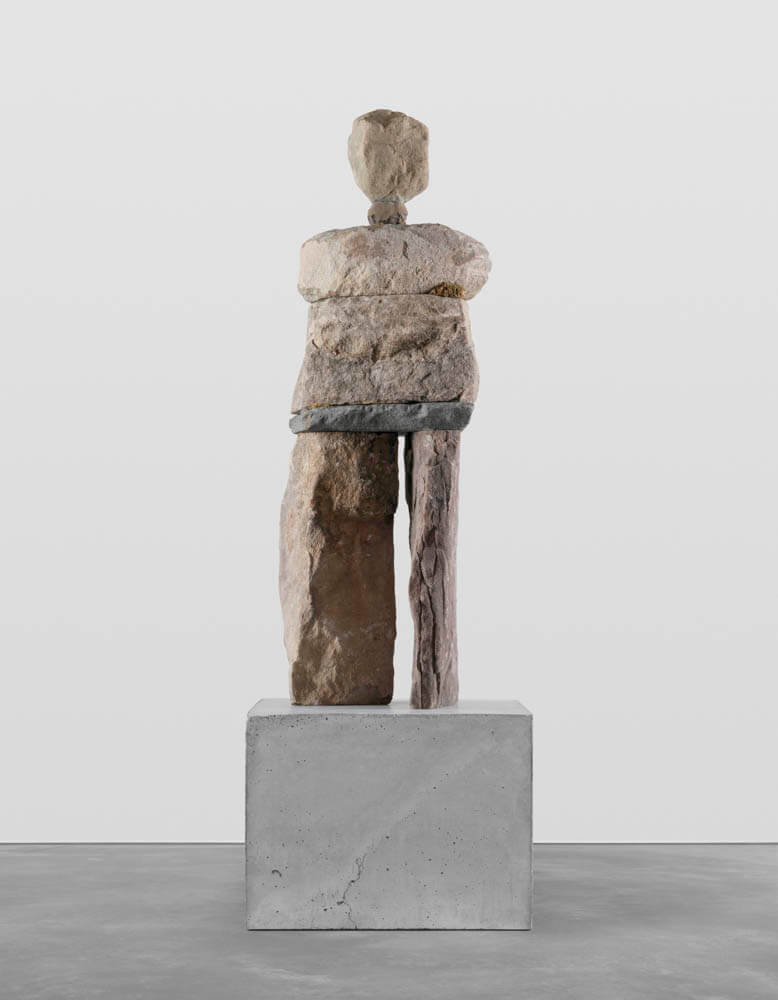
The Earnest soul is sincere and serious. Likely someone that stands by their beliefs.
Explore the works below. Before expanding the text, think to yourself:
What do you see?
What do you feel?
What might it be addressing?
What questions do you have?
Do you like it? Why or why not?
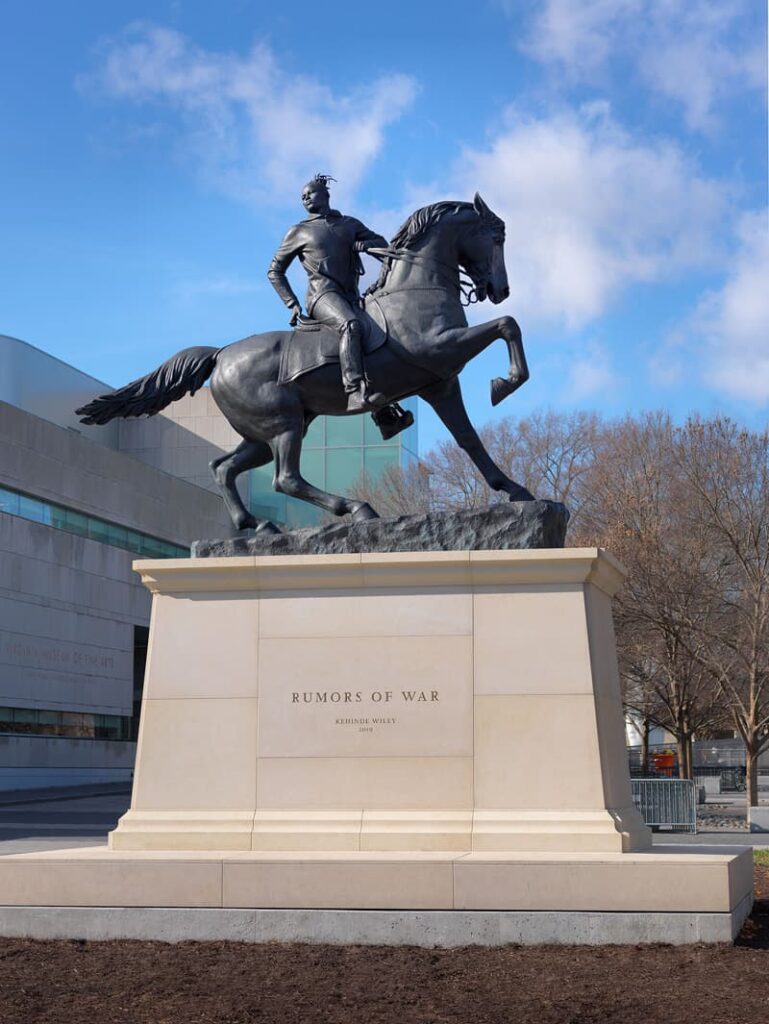
Expand to learn more
This is Rumors of War (2019) by Kehinde Wiley. This sculpture takes the form of the now commonplace man-on-horse-on-pedestal, but with a twist. Where those statues, often made to honor Confederate soldiers, depict white men and glorify the battles they fought in, Wiley depicts instead a distinctly Black man with only the text, “Rumors of War” on the side. In particular, it is riffing off of the statue of JEB Stuart, a Confederate army general. The two statues are formally similar, with only small differences to differentiate them such as the race and attire of the figure as well as the face of the horse—where Stuart’s horse is terrified, Wiley’s is calm. In the language of equestrian statues, the raised hoof signifies that the rider died in battle.
The title, Rumors of War comes from the Book of Matthew in the Bible, “you will hear of wars and rumors of wars, but see to it that you are not alarmed. Such things must happen, but the end is still to come.” (Matthew 24:6). The title also serves another purpose. It brings into question violences against Black people in America that have been ignored, unmemorialized, and unquestioned.
Rumors of War is located outside of the Virginia Museum of Fine Arts in Richmond. However, rather than be located centrally, it is at the very edge of the museum’s property, facing the United Daughters of the Confederacy building.
One big question regarding public art and monuments is whether they are legible to everyday passersby. Without knowing most of the context, would passing this on the street alert you to any of these histories?
About the Artist
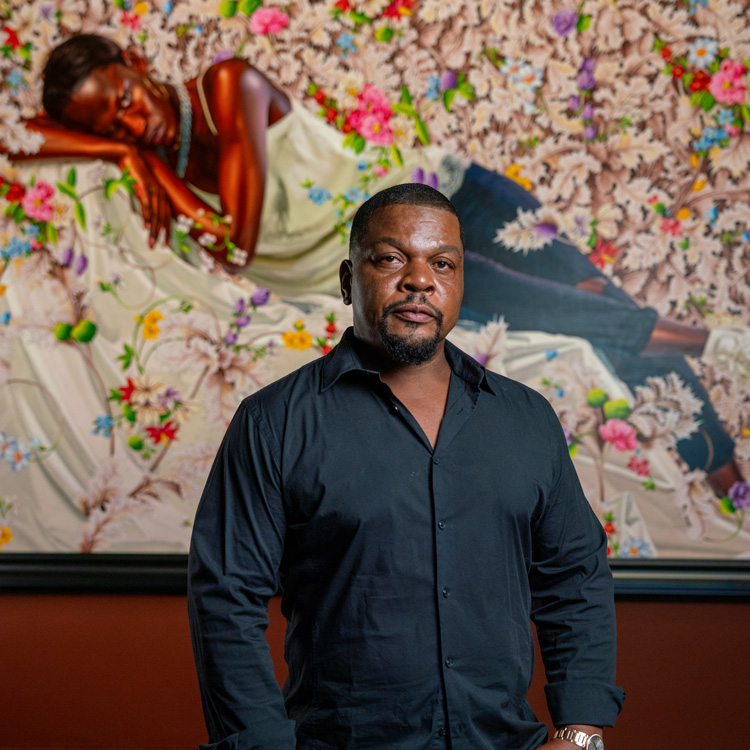
Kehinde Wiley (b. 1977) is one of the most prolific contemporary artists. Starting in painting, he is best known for his depiction of Black subjects in nature with the glory and aesthetics of historical portraiture. He is also known for painting the Obama portrait. In recent years, he has moved into sculpture as well.
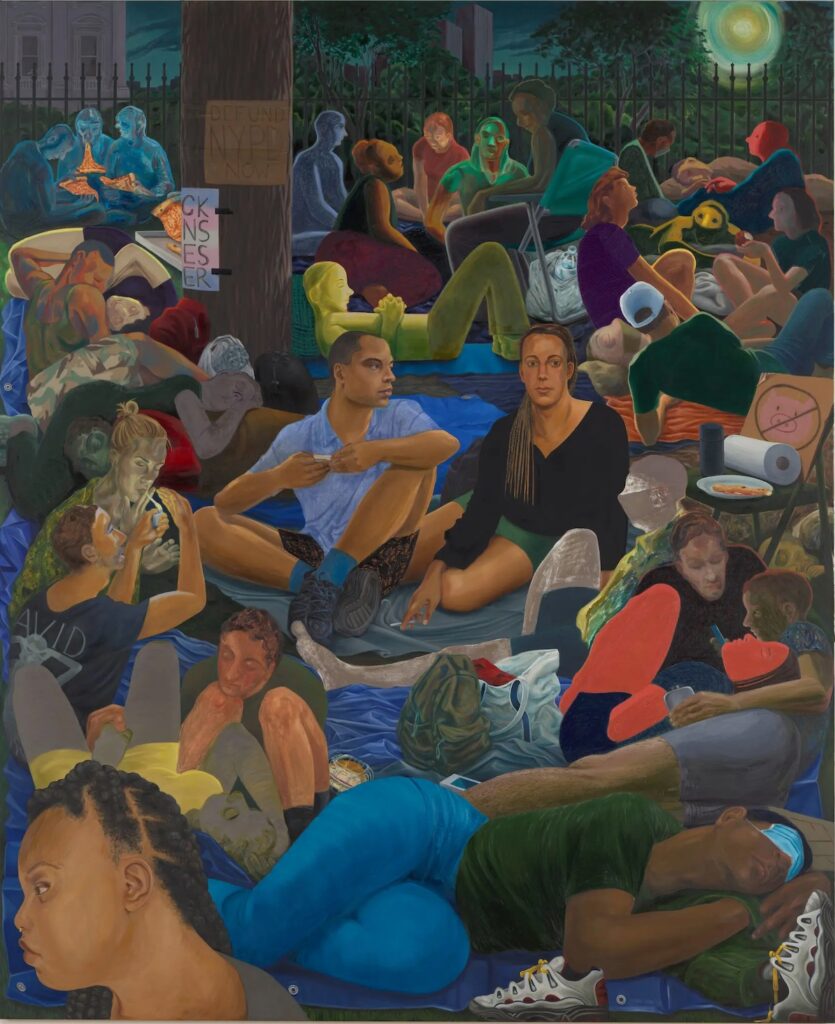
Expand to learn more
This is Abolitionists in the Park (2020-2022) by Nicole Eisenman. The painting focuses on a scene from “Occupy City Hall”, the protest n Manhattan in 2020 in the wake of the murder of George Floyd. Like many of Eisenman’s paintings, the work is focused on the individual people. In the scene, we see people gathered in separate, but united groups eating, smoking, chatting, but all protesting for the same thing. Besides the title, certain elements in the scene can clue us in to the context such as the sign with the crossed out pig on the right hand side or the DEFUND NYPD NOW sign on the tree.
While most of the subjects are busy doing their own thing, one figure—the woman in the center—looks straight ahead at us. Is she holding us accountable? Are we here with her?
About the Artist
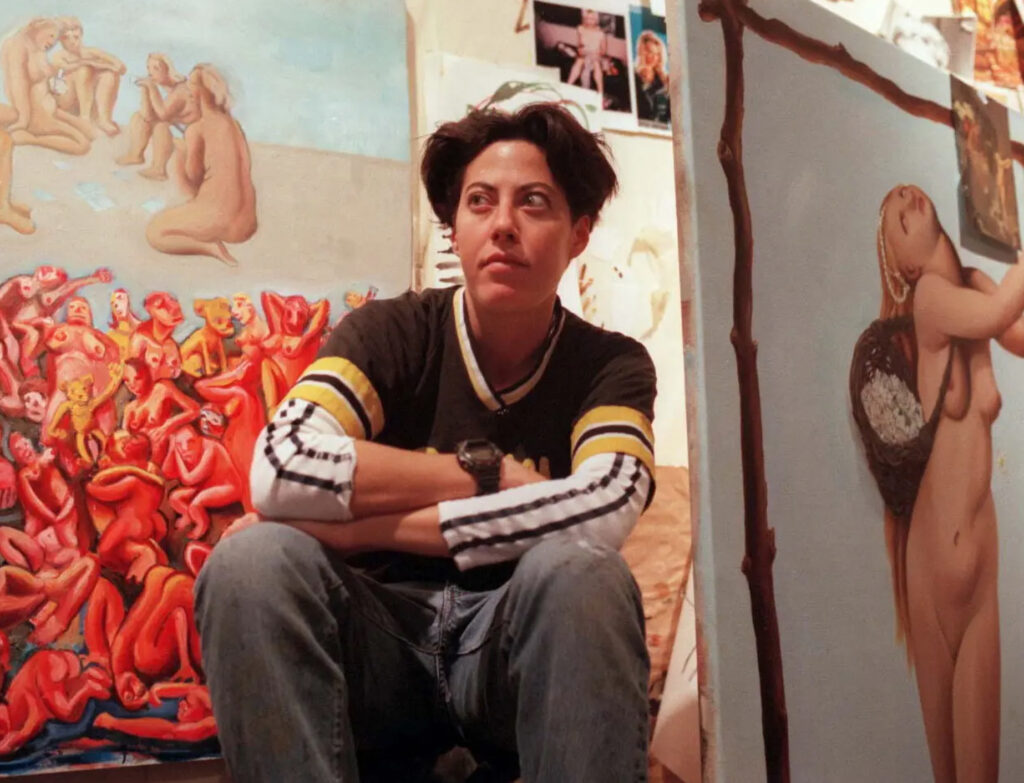
Nicole Eisenman (b. 1965) is a French-born American artist who works primarily in painting, and more recently in sculpture. She is best known for her figurative oil paintings that play with themes of sexuality, irony, and caricature. Stylistically, Eisenman draws from the social and political legacy of German expressionism, most obviously through their use of vibrant, jarring colors and shapes as well as a focus on individual emotion.
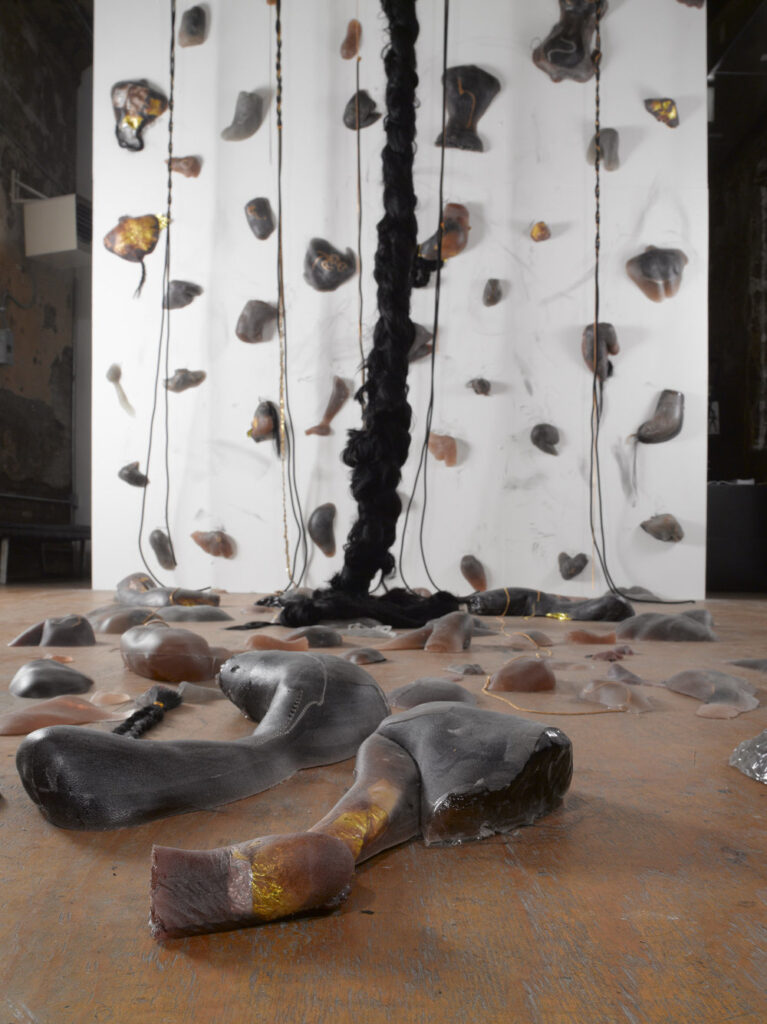
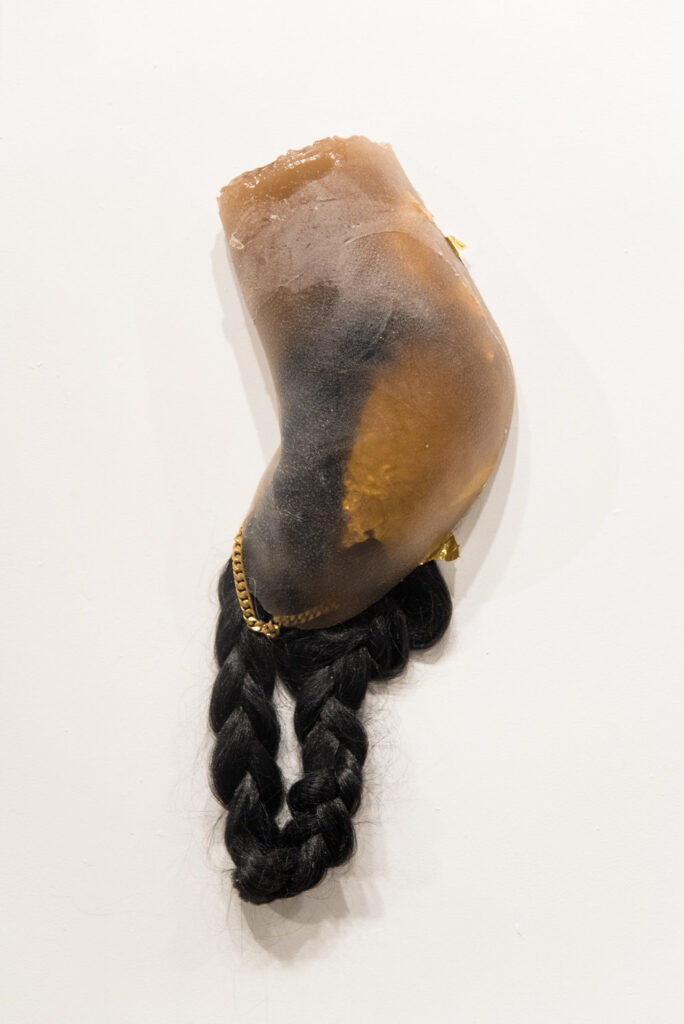
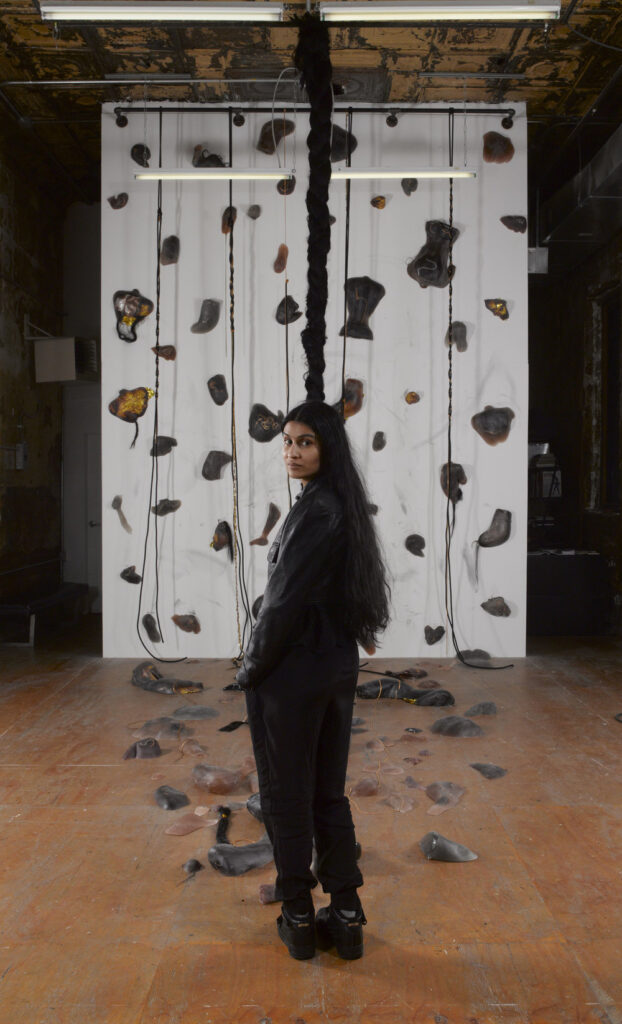
Expand to learn more
This is Braidrage (2017) by Baseera Khan. MadBraidrage consists of 99 climbing holds made of dyed resin casts of the corners and folds of the artist’s body. The holds are embedded with chains, blankets, and most notably, hair. Some of the holds are on the wall, while others are spread across the ground. The work fuses the performance with the visual. For the performance, Khan covered themself in black chalk and then climbs across the wall, leaving black streaks on the wall reminiscent of abstract drawing. If you want to watch the whole performance (34 minutes):
https://www.youtube.com/watch?v=DFHhCA32wXI
The title suggests rage and anger. What could Khan — a non-binary, queer, Muslim, South-Central Asian artist — be suggesting through the use of their own body as building blocks to ascend the white, museum wall?
About the Artist
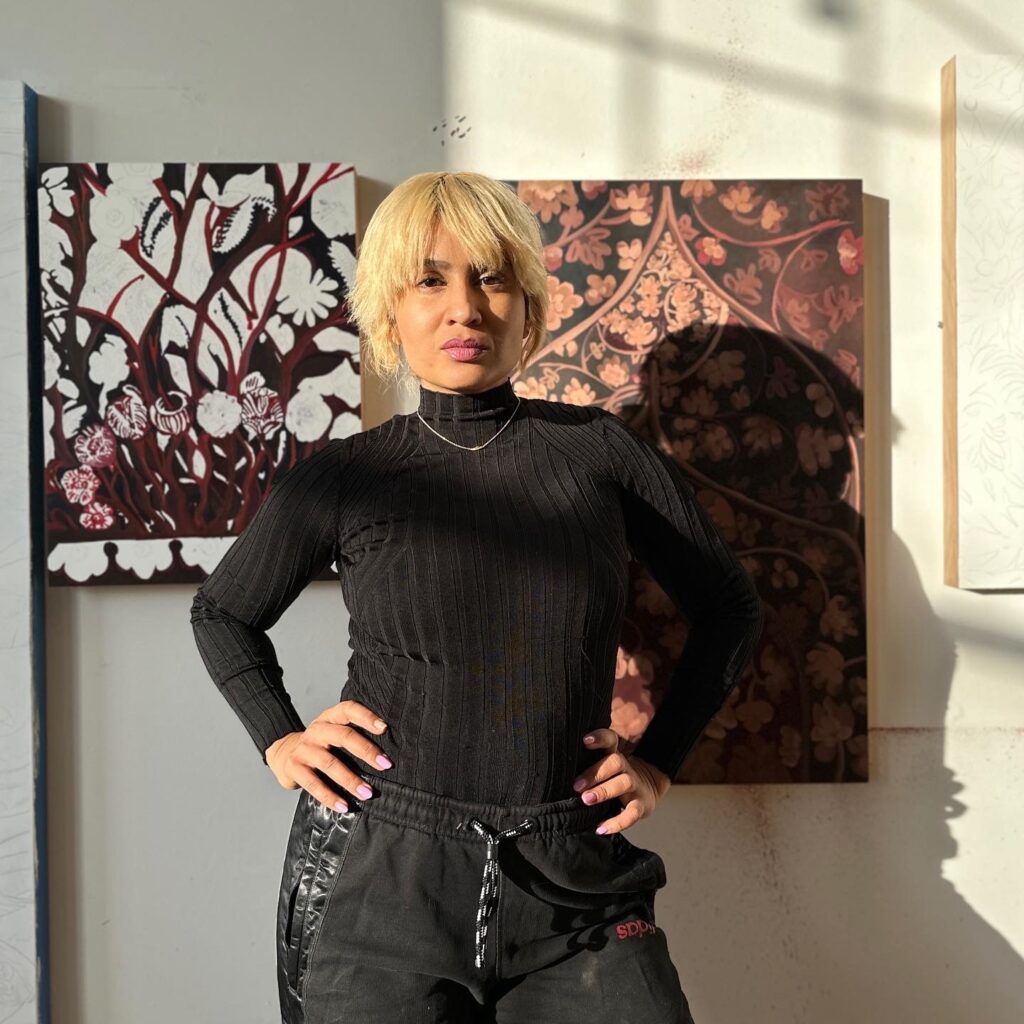
Baseera Khan (b. 1980) is an American artist of Indian-Afghani descent. They are best known for using a variety of mediums to explore the body, particularly the Muslim-American body.